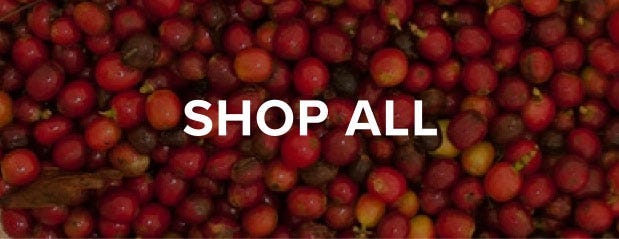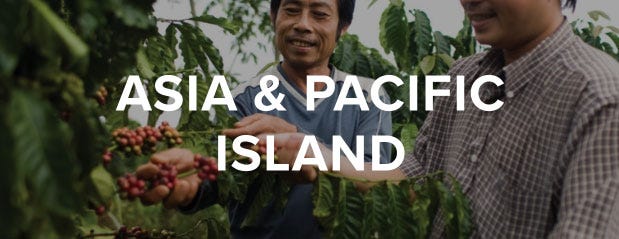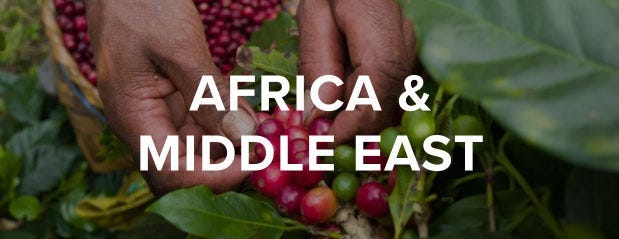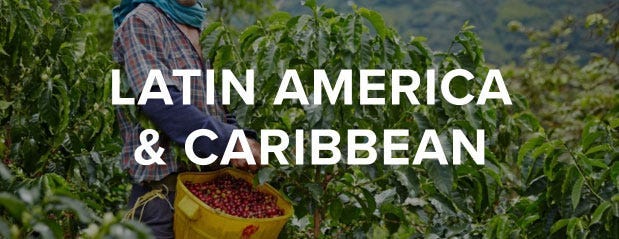Stars and Storms and the Coffee of Malawi
Malawi is a landlocked country that may not feel like a landlocked country. Just a little smaller than Mississippi, Malawi comes with over 400 miles of lakefront property. One-third of Malawi is taken up by Lake Malawi, one of the world’s largest lakes, fourth by volume and eighth by surface area. You could fit the entire state of Rhode Island inside Lake Malawi … eight times. The lake is home to more species of fish than any other lake on earth, and the highlands above the northeastern shore are home to coffee farms.
 Lake
Malawi. This and top photo used under Creative Commons.
Lake
Malawi. This and top photo used under Creative Commons.
You can also stand on the shore of Lake Malawi in another coffee producing country, Tanzania, where it is known as Lake Nyasa. But as soon as you step into the water you are technically in Malawi because the water line marks the border between the countries, a regularly disputed boundary created by the United Kingdom and Germany in 1890 during one of many colonial slicing sessions. Britain and Germany would later fight an actual naval battle, gunboat to gunboat, on the lake during WWI. The battle, which consisted of a single cannon shot, was won by the British.
Like much of the African interior, European explorers didn't really show up until the mid-19th century. One of the first to explore the region surrounding Lake Malwai and countries that would become some of our favorite coffee lands, was, you guessed it (or maybe you presumed it) Dr. David Livingstone. Maybe Livingstone was running out of royalty, but he didn’t give the lake a British moniker. For some reason, in this case, he actually asked the locals what they called the lake. Nyasa, they told him, a word that means … lake (“You mean that big lake right there? Yeah, we call that ‘lake’”). In fact, before Malawi was called Malawi, it was called Nyasaland. So, Nysa is what Livingstone named the lake (i.e. lake lake), because naming things was apparently his chief function, a favor that has been returned dozens of times throughout the region. If you ever visit Lake Malawi, you might stay at the Livingstonia Lodge near Livingstonia University in the town of Livingstonia.
 Photo by F.
Almeida used under Creative Commons
Photo by F.
Almeida used under Creative Commons
Dr. Livingstone cheated a little on the naming thing. He did use the local name in his official role as namer-of-things. But he also gave the lake two additional nicknames: Lake of Stars, because from a distance the lights of fishing boats at night looked like stars; and Lake of Storms, because he once endured a particularly ferocious storm near the lake shore. Indeed, from May through August a strong southeasterly wind, called the mwera, is constant and keeps the waters restless.
Like Rwanda, Burundi, Tanzania and eastern Zambia, Malawi is part of the East African Rift Valley which, geologically and as far as coffee is concerned, means altitude and volcanic soil. Malawi also shares with those countries a mixed and somewhat ambivalent history when it comes to coffee.
Coffee first came to Malawi in 1878 and was grown by both local farmers and Europeans, but production and exports were nominal until the 1950’s when the government distributed seeds in an effort to encourage an increase in cash crops for export. This effort was primarily focused on farmers in the northernmost highlands on the border with Tanzania, the “Misuku Hills.” Enough small farmers started growing coffee that in 1957 they formed the Misuku Coffee Growers Cooperative Society, which is still in operation.
 Photo by
F. Almeida used under Creative Commons
Photo by
F. Almeida used under Creative Commons
There are a handful of estates in southern Malawi on what Livingstone dubbed the “Shire Plateau,” also known as the Shire Highlands, but in central and northern Malawi coffee is grown by smallholders with a now long tradition of forming cooperatives, six of which belong to a larger “union of farmers” named Mzuzu after the town that is home to its processing facility not far from the shores Lake Malawi. The six members of Mzuzu Coffee Cooperative Union include the Misuku Coffee Growers Cooperative, which supplies roughly half of Mzuzu’s coffee. In the Misuku Hills, coffee grows at between 1700 and 2000 meter above sea level in loamy clay soil.
Twenty-five percent of the coffee farmers participating in the Mzuzu union are women. The stated goal at Mzuzu Union is “to improve quality of life of our member farmers through sustainable farmer organizations by promoting sustainable, production, processing and marketing technologies.” Mzuzu is Fair Trade Certified and considers success as every smallholder coffee farmer achieving the following:
- Decent Accommodation: Iron roof, cement floors, plastered walls, adequate ventilation.
- Food Security: Three decent meals a day.
- Adequate Warmth: Decent clothing for the family, adequate bedding.
- Education: Send all children to decent schools.
Simple but critical goals in one of the poorest countries in the world.
 Eunice Nkhoma sorting cherries at
Ntchenachena washing station. Photo by Mzuzu Coffee Cooperative Union.
Eunice Nkhoma sorting cherries at
Ntchenachena washing station. Photo by Mzuzu Coffee Cooperative Union.
Compared to tobacco, sugar, and tea, coffee production has always been small, less than 5% of exports, but the number is growing as a focus on quality processing for the specialty market increases and farmers are incentivized by better prices.







